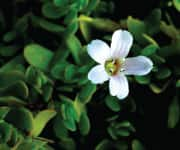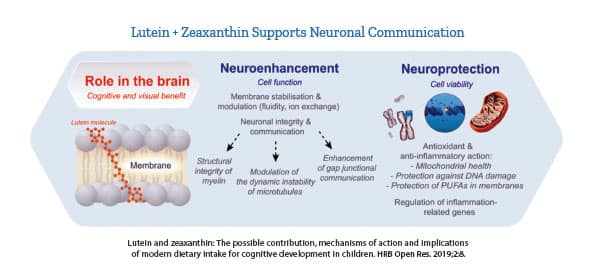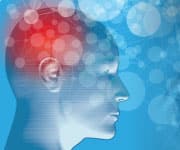Life Extension Magazine®
Nootropics are compounds that enhance cognition and facilitate learning.
They differ from nutrients that protect against brain aging.
Nootropics are for people seeking to improve brain processing speed and mental alertness.
Nutrients with nootropic properties have become popular for people of all ages to improve thinking speed and accuracy.
Nootropics Tune Up Your Mind
Nootropics are a different type of brain and cognition supplement. Their goal is to boost cognitive performance now.
Nootropics are meant to improve and recall recent and old memories.
Nootropic compounds boost cognitive efficiencies by helping brain cells operate at peak power.
Scientists have identified nutrients shown in clinical (human) studies to improve cognitive function, processing speed, and memory.
Bacopa Monnieri Improves Learning

As we age, our ability to process and absorb new information begins to decline.
In seeking to create a plant-based nootropic, researchers focused on compounds associated with cognitive enhancement in human studies. One key aspect of improved cognition is improving the brain’s ability to learn and retain information.
Research on the flowering herb Bacopa monnieri reveals improved memory. In ancient times, the herb was given to scholars to improve their learning and memorization of vast religious texts that were orally handed down from generation to generation.1
In several clinical trials, standardized extracts of Bacopa have been shown to sharpen several aspects of cognitive function, specifically learning rate and retention of information.2-9
These human studies also show that Bacopa improved additional aspects of cognitive functions such as:
- Auditory verbal learning speed,
- Speed of visual processing,
- Working memory,
- Formation of new memories,
- Recall of memories, and
- Power and speed of attention.
In animal studies, standardized extract of Bacopa also improved brain activity by promoting the growth of neuron connections in the hippocampus and amygdala, another part of the brain involved in perception of emotions.10-12 The hippocampus is one of the most important brain regions for the formation of new memories. Other benefits included:1,12,13
- Improved spatial learning,
- Increased dendritic length and branching,
- Modulation of neurotransmitter production,
- Increased synaptic concentration,
- Reduced brain inflammation,
- Increased cerebral blood flow, which reduces oxygen and nutrient deficits, and
- Increased nourishment of neurons.
Gotu Kola Improves Reaction Time and Accuracy

The next step in creating a multi-function nootropic was investigating the herb gotu kola.
Gotu kola is a flowering herb native to Asia. It has also been used to boost brain power in traditional Eastern medicine for centuries.
In one clinical trial of healthy, older adults, daily intake of standardized extract of gotu kola for two months led to significant improvements in several aspects of brain function.14
Using electroencephalography (EEG), the electrical activity of the brain was recorded and combined with cognitive testing. Researchers saw evidence of improved attention and reaction time in mental tasks just one hour after supplementation. These improvements in reaction time indicate improved brain processing speed.

By the end of the two-month study, other improvements in cognitive function were seen, including short-term working memory, word recognition, spatial memory and picture recognition, and alertness.
Gotu kola also improved mood and calmness. This has implications for managing anxiety and depression, which can clarity.15
In another study, patients with generalized anxiety disorder who supplemented with gotu kola noted significantly improved levels of anxiety and stress.16
Gotu kola has also demonstrated benefits in animal studies.17,18 In a mouse model of dementia, animals given extracts of gotu kola performed significantly better than untreated animals in tests of learning and memory.18
What you need to know
A Powerful Nootropic Formula
- Nootropics are compounds and nutrients meant to enhance cognitive abilities in healthy individuals.
- Life Extension® scientists have identified four such plant nutrients, which have individually demonstrated the ability to improve brain function.
- The carotenoids lutein and zeaxanthin and standardized extracts of the flowering herbs gotu kola and Bacopa monnieri have each been shown in clinical trials to enhance cognitive abilities, improve memory and learning, brain processing speed, and more.
The Eye-Brain Connection

Carotenoids are a group of pigments found in many fruits and vegetables.
Two closely related carotenoids, lutein and zeaxanthin, are taken up and concentrated in the retina of the eye, the tissue that senses light and sends information to the brain for visual recognition via the optic nerve.
Lutein and zeaxanthin have long been shown to protect macular density necessary for visual function.19-24 These carotenoid pigments help maintain sharp sight while protecting the retina from damage due to blue light, chronic inflammation, and other threats.
Scientists have discovered that significant amounts of lutein and zeaxanthin also concentrate in the brain.
This isn’t very surprising, since the retina is technically an extension of the brain that contains nerve cells similar to those found in the brain itself.25-29
Levels of lutein and zeaxanthin in the eye and the brain are directly correlated.25-29 That means testing their levels in the eye, which is easier to do, allows scientists to also estimate the levels of lutein and zeaxanthin in the brain.
People with the highest plasma and macular levels of lutein and zeaxanthin also have the highest cognitive function.27,30-35
Using advanced MRI imaging technology, researchers were able to show that higher levels of carotenoids in the brain were associated with better efficiency of the brain cells during tests of learning, memory, perception, decision-making, and motor coordination.33
Human Studies of Lutein and Zeaxanthin

Based on findings that lutein and zeaxanthin function as nootropics, researchers identified a source derived from marigold flowers.
The combination of lutein and zeaxanthin has been tested in nine human studies on brain function in a wide age range.36-44
Scientists found that oral intake of lutein-zeaxanthin leads to improvements in brain speed, efficiency, and overall cognitive function.
Research shows that lutein and zeaxanthin improved brain function through:43,45
- Improved neuronal communication,
- Increased neural integrity,
- Enhanced memory retention, and
- Increased processing of visual signals.
In healthy young adults, 10 mg of lutein and 2 mg of zeaxanthin daily resulted in significant improvements in memory, reasoning, and complex attention — the ability to hold complicated ideas in the mind, assess them, and quickly act on them.41
This improvement in complex attention indicates that brain processing speeds were increased, allowing individuals to better assess complex stimuli and react appropriately.
Similar findings have been seen in older adults. The same dosage of lutein and zeaxanthin improved complex attention and other aspects of cognition in subjects averaging 73.7 years of age.40
In another study of older adults, oral lutein and zeaxanthin helped maintain learning and memory while improving brain blood flow, while these functions deteriorated in participants who received a placebo.39
Scientists believe lutein and zeaxanthin work, in part, by wedging themselves into the walls of brain cell membranes.25,45-48 This may boost the membrane’s functional properties and improve other aspects of membrane integrity.
Summary
The field of nootropics research aims to find compounds and nutrients that can boost cognitive performance.
A combination of nootropic compounds has been formulated to enhance brain function.
The carotenoids lutein and zeaxanthin, which are concentrated in the eye and brain, can improve and protect visual and mental function.
Standardized extracts of gotu kola and Bacopa monnieri each enhanced several aspects of cognitive function and mood in clinical trials.
This combination may help people of all ages achieve their full neurological potential.
If you have any questions on the scientific content of this article, please call a Life Extension® Wellness Specialist at 1-866-864-3027.
References
- Aguiar S, Borowski T. Neuropharmacological review of the nootropic herb Bacopa monnieri. Rejuvenation Res. 2013 Aug;16(4):313-26.
- Benson S, Downey LA, Stough C, et al. An acute, double-blind, placebo-controlled cross-over study of 320 mg and 640 mg doses of Bacopa monnieri (CDRI 08) on multitasking stress reactivity and mood. Phytother Res. 2014 Apr;28(4):551-9.
- Calabrese C, Gregory WL, Leo M, et al. Effects of a standardized Bacopa monnieri extract on cognitive performance, anxiety, and depression in the elderly: a randomized, double-blind, placebo-controlled trial. J Altern Complement Med. 2008 Jul;14(6):707-13.
- Morgan A, Stevens J. Does Bacopa monnieri improve memory performance in older persons? Results of a randomized, placebo-controlled, double-blind trial. J Altern Complement Med. 2010 Jul;16(7):753-9.
- Peth-Nui T, Wattanathorn J, Muchimapura S, et al. Effects of 12-Week Bacopa monnieri Consumption on Attention, Cognitive Processing, Working Memory, and Functions of Both Cholinergic and Monoaminergic Systems in Healthy Elderly Volunteers. Evid Based Complement Alternat Med. 2012;2012:606424.
- Raghav S, Singh H, Dalal PK, et al. Randomized controlled trial of standardized Bacopa monniera extract in age-associated memory impairment. Indian J Psychiatry. 2006 Oct;48(4):238-42.
- Roodenrys S, Booth D, Bulzomi S, et al. Chronic effects of Brahmi (Bacopa monnieri) on human memory. Neuropsychopharmacology. 2002 Aug;27(2):279-81.
- Stough C, Downey LA, Lloyd J, et al. Examining the nootropic effects of a special extract of Bacopa monniera on human cognitive functioning: 90 day double-blind placebo-controlled randomized trial. Phytother Res. 2008 Dec;22(12):1629-34.
- Stough C, Lloyd J, Clarke J, et al. The chronic effects of an extract of Bacopa monniera (Brahmi) on cognitive function in healthy human subjects. Psychopharmacology (Berl). 2001 Aug;156(4):481-4.
- Vollala VR, Upadhya S, Nayak S. Enhanced dendritic arborization of amygdala neurons during growth spurt periods in rats orally intubated with Bacopa monniera extract. Anat Sci Int. 2011 Dec;86(4):179-88.
- Vollala VR, Upadhya S, Nayak S. Enhancement of basolateral amygdaloid neuronal dendritic arborization following Bacopa monniera extract treatment in adult rats. Clinics (Sao Paulo). 2011;66(4):663-71.
- Vollala VR, Upadhya S, Nayak S. Enhanced dendritic arborization of hippocampal CA3 neurons by Bacopa monniera extract treatment in adult rats. Rom J Morphol Embryol. 2011;52(3):879-86.
- Nemetchek MD, Stierle AA, Stierle DB, et al. The Ayurvedic plant Bacopa monnieri inhibits inflammatory pathways in the brain. J Ethnopharmacol. 2017 Feb 2;197:92-100.
- Wattanathorn J, Mator L, Muchimapura S, et al. Positive modulation of cognition and mood in the healthy elderly volunteer following the administration of Centella asiatica. J Ethnopharmacol. 2008 Mar 5;116(2):325-32.
- Robinson OJ, Vytal K, Cornwell BR, et al. The impact of anxiety upon cognition: perspectives from human threat of shock studies. Front Hum Neurosci. 2013;7:203.
- Jana U, Sur TK, Maity LN, et al. A clinical study on the management of generalized anxiety disorder with Centella asiatica. Nepal Med Coll J. 2010 Mar;12(1):8-11.
- Matthews DG, Caruso M, Murchison CF, et al. Centella Asiatica Improves Memory and Promotes Antioxidative Signaling in 5XFAD Mice. Antioxidants (Basel). 2019 Dec 8;8(12).
- Zhang Z, Li X, Li D, et al. Asiaticoside ameliorates beta-amyloid-induced learning and memory deficits in rats by inhibiting mitochondrial apoptosis and reducing inflammatory factors. Exp Ther Med. 2017 Feb;13(2):413-20.
- Bian Q, Gao S, Zhou J, et al. Lutein and zeaxanthin supplementation reduces photooxidative damage and modulates the expression of inflammation-related genes in retinal pigment epithelial cells. Free Radic Biol Med. 2012 Sep 15;53(6):1298-307.
- Chucair AJ, Rotstein NP, Sangiovanni JP, et al. Lutein and zeaxanthin protect photoreceptors from apoptosis induced by oxidative stress: relation with docosahexaenoic acid. Invest Ophthalmol Vis Sci. 2007 Nov;48(11):5168-77.
- Kijlstra A, Tian Y, Kelly ER, et al. Lutein: more than just a filter for blue light. Prog Retin Eye Res. 2012 Jul;31(4):303-15.
- Loskutova E, Nolan J, Howard A, et al. Macular pigment and its contribution to vision. Nutrients. 2013 May 29;5(6):1962-9.
- Strauss O. The retinal pigment epithelium in visual function. Physiol Rev. 2005 Jul;85(3):845-81.
- Xue C, Rosen R, Jordan A, et al. Management of Ocular Diseases Using Lutein and Zeaxanthin: What Have We Learned from Experimental Animal Studies? J Ophthalmol. 2015;2015:523027.
- Erdman JW, Jr., Smith JW, Kuchan MJ, et al. Lutein and Brain Function. Foods. 2015 Dec;4(4):547-64.
- Power R, Coen RF, Beatty S, et al. Supplemental Retinal Carotenoids Enhance Memory in Healthy Individuals with Low Levels of Macular Pigment in A Randomized, Double-Blind, Placebo-Controlled Clinical Trial. J Alzheimers Dis. 2018;61(3):947-61.
- Vishwanathan R, Iannaccone A, Scott TM, et al. Macular pigment optical density is related to cognitive function in older people. Age Ageing. 2014 Mar;43(2):271-5.
- Vishwanathan R, Schalch W, Johnson EJ. Macular pigment carotenoids in the retina and occipital cortex are related in humans. Nutr Neurosci. 2016;19(3):95-101.
- Vishwanathan R, Neuringer M, Snodderly DM, et al. Macular lutein and zeaxanthin are related to brain lutein and zeaxanthin in primates. Nutr Neurosci. 2013 Jan;16(1):21-9.
- Ajana S, Weber D, Helmer C, et al. Plasma Concentrations of Lutein and Zeaxanthin, Macular Pigment Optical Density, and Their Associations With Cognitive Performances Among Older Adults. Invest Ophthalmol Vis Sci. 2018 Apr 1;59(5):1828-35.
- Feeney J, O’Leary N, Moran R, et al. Plasma Lutein and Zeaxanthin Are Associated With Better Cognitive Function Across Multiple Domains in a Large Population-Based Sample of Older Adults: Findings from The Irish Longitudinal Study on Aging. J Gerontol A Biol Sci Med Sci. 2017 Oct 1;72(10):1431-6.
- Lindbergh CA, Mewborn CM, Hammond BR, et al. Relationship of Lutein and Zeaxanthin Levels to Neurocognitive Functioning: An fMRI Study of Older Adults. J Int Neuropsychol Soc. 2017 Jan;23(1):11-22.
- Mewborn CM, Lindbergh CA, Robinson TL, et al. Lutein and Zeaxanthin Are Positively Associated with Visual-Spatial Functioning in Older Adults: An fMRI Study. Nutrients. 2018 Apr 7;10(4).
- Renzi LM, Dengler MJ, Puente A, et al. Relationships between macular pigment optical density and cognitive function in unimpaired and mildly cognitively impaired older adults. Neurobiol Aging. 2014 Jul;35(7):1695-9.
- Wong JC, Kaplan HS, Hammond BR. Lutein and zeaxanthin status and auditory thresholds in a sample of young healthy adults. Nutr Neurosci. 2017 Jan;20(1):1-7.
- Mewborn CM, Lindbergh CA, Hammond BR, et al. The Effects of Lutein and Zeaxanthin Supplementation on Brain Morphology in Older Adults: A Randomized, Controlled Trial. J Aging Res. 2019 2019/12/01;2019:3709402.
- Ceravolo SA, Hammond BR, Oliver W, et al. Dietary Carotenoids Lutein and Zeaxanthin Change Brain Activation in Older Adult Participants: A Randomized, Double-Masked, Placebo-Controlled Trial. Mol Nutr Food Res. 2019 Aug;63(15):e1801051.
- Lindbergh CA, Lv J, Zhao Y, et al. The effects of lutein and zeaxanthin on resting state functional connectivity in older Caucasian adults: a randomized controlled trial. Brain Imaging Behav. 2020 Jun;14(3):668-81.
- Lindbergh CA, Renzi-Hammond LM, Hammond BR, et al. Lutein and Zeaxanthin Influence Brain Function in Older Adults: A Randomized Controlled Trial. J Int Neuropsychol Soc. 2018 Jan;24(1):77-90.
- Hammond BR, Jr., Miller LS, Bello MO, et al. Effects of Lutein/Zeaxanthin Supplementation on the Cognitive Function of Community Dwelling Older Adults: A Randomized, Double-Masked, Placebo-Controlled Trial. Front Aging Neurosci. 2017;9:254.
- Renzi-Hammond LM, Bovier ER, Fletcher LM, et al. Effects of a Lutein and Zeaxanthin Intervention on Cognitive Function: A Randomized, Double-Masked, Placebo-Controlled Trial of Younger Healthy Adults. Nutrients. 2017 Nov 14;9(11).
- Bovier ER, Hammond BR. A randomized placebo-controlled study on the effects of lutein and zeaxanthin on visual processing speed in young healthy subjects. Arch Biochem Biophys. 2015 Apr 15;572:54-7.
- Bovier ER, Renzi LM, Hammond BR. A double-blind, placebo-controlled study on the effects of lutein and zeaxanthin on neural processing speed and efficiency. PLoS One. 2014;9(9):e108178.
- Johnson EJ, McDonald K, Caldarella SM, et al. Cognitive findings of an exploratory trial of docosahexaenoic acid and lutein supplementation in older women. Nutr Neurosci. 2008 Apr;11(2):75-83.
- Loskutova E, Shah K, Flitcroft ID, et al. Lutein and zeaxanthin: The possible contribution, mechanisms of action and implications of modern dietary intake for cognitive development in children. HRB Open Research. 2019;2(8).
- Gruszecki WI, Strzalka K. Carotenoids as modulators of lipid membrane physical properties. Biochim Biophys Acta. 2005 May 30;1740(2):108-15.
- Stahl W, Sies H. Effects of carotenoids and retinoids on gap junctional communication. Biofactors. 2001;15(2-4):95-8.
- Widomska J, Subczynski WK. Why has Nature Chosen Lutein and Zeaxanthin to Protect the Retina? J Clin Exp Ophthalmol. 2014 Feb 21;5(1):326.

